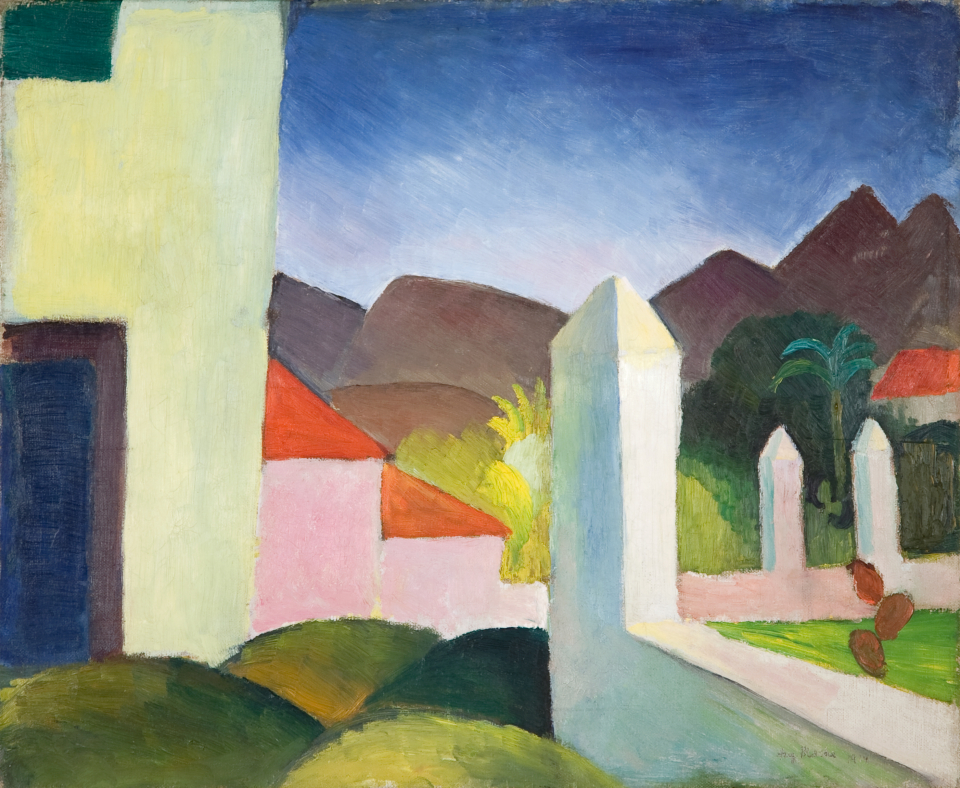Jugendstil-Bau > Ebene 1 > Galerie 14
Intro
In April 1914 August Macke set off for Tunisia together with Paul Klee (1879–1940) and Louis Moilliet (1880–1962). Little did they realize the extent to which the forthcoming journey—one of the most famous study trips of German Expressionism—would influence them as artists. Just two weeks later, however, Paul Klee noted enthusiastically in his diary: “The color has captured me … I am a painter.”
Macke, who belonged to the Blue Rider circle, also developed an incredible productivity under the North African light, creating 167 drawings, 38 watercolors, and numerous photographs, some of which he translated into oil paintings on his return. »African Landscape« also belongs to this group of works and depicts a motif from St. Germain, a settlement outside Tunis inhabited by Europeans. Macke captures the radiant North African light with strong colors and vivid contrasts. Although this work is representational, it displays a propensity for abstraction, with the buildings and landscape reduced to basic geometrical forms. Macke was killed in World War I a few months after completing this painting. The pictures from his journey to Tunisia represent one of the final high points of his oeuvre.
Kunsthalle Mannheim
Transkription
Can you feel the sunlight warming your body? In this oil painting, August Macke has captured the brilliant light of North Africa, working with strong colors and vivid contrasts. The painting „African Landscape“ depicts a view from St. Germain, a settlement outside of Tunis which was inhabited by Europeans. Though representational, this work nevertheless displays a tendency towards abstraction –buildings and landscape are reduced to basic geometrical forms, for example.
This painting was created during the Tunis journey, destined to become one of the most famous study trips of German Expressionism. Paul Klee thought up the plan for the journey together with August Macke and Louis Moilliet, which was supposed to promote mutual inspiration. In April 1914, the three friends set off for Tunisia. None of them realized the extent to which the forthcoming journey would influence them, in spite of its only lasting 14 days.
Macke belonged to the Blaue Reiter group. He developed an incredible productivity under the North African sun. As he wrote in a letter: „My painting is going swimmingly, I am experiencing a work drive such as I have never felt before.“
Altogether, he produced 167 drawings, 38 watercolors, and numerous photographs, some of which he turned into oil paintings on his return, such as the painting we are looking at.
August Macke was killed in the First World War a few months after finishing this painting. The paintings from his Tunis journey represent one of the final high points of his oeuvre. Though he had only painted for a relatively short time, Macke is one of Expressionisms leading representatives.
